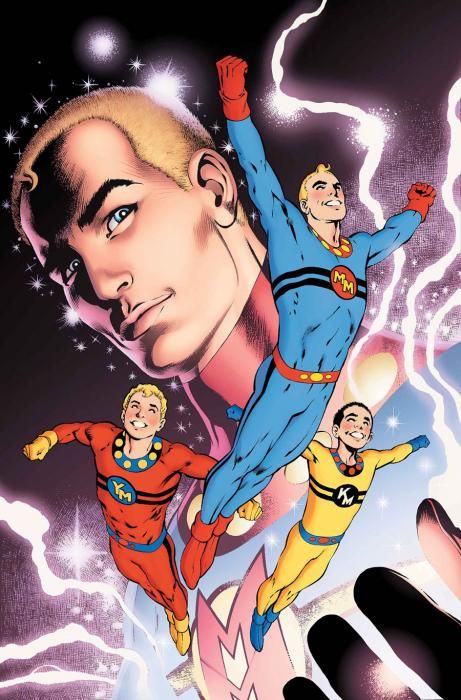I remember hunting down "Miracleman" collections in 1991, and ever since then I've had a certain fondness for the series. But as great as "Miracleman" gets (especially the third volume by Alan Moore and John Totleben), there's also no denying that the first couple of stories are a tiny bit clunky. They're written by a much younger Moore, one who's still perfecting his craft. And in many ways, the never-before reprinted story contained in "Miracleman" #2 is the perfect example on how much stronger of a writer he (and therefore the series) became.
The basic plotting in "Miracleman" #2 is still good, as we see Michael Moran's past start to come back to haunt him. The basic thrust of the issue makes perfect sense; if he survived, it stands to reason that one of the other members of the "Miracle Family" could have also made it through the cataclysmic event that was thought to destroy all three of them. And so, we meet the rotten-to-the-core Kid Miracleman.
Kid Miracleman is probably best known for what's still to come in the series, but his small rampage in this issue is still a bit creepy. Throwing children at buildings is certainly shorthand for "this is a bad man," but Moore and Garry Leach make it work in part because of the matter-of-fact, sociopathic manner in which it happens. Kid Miracleman should make your skin crawl, and even at this earliest of moments it succeeds. Leach's art in particular looks great under the new colors from Steve Oliff; you can really see all of the fine lines from Leach, with the amount of detail that you normally would have only associated with Totleben's later work on the series. Every little hair is carefully drawn in here, and the end result is something you can stare at for hours. And when it comes to moments like Kid Miracleman's rising up from the edge of the balcony? Well, it's such a menacing pose that it can't help but make you jump a bit.
The weak link here is, unfortunately, a lot of the narration. It's overwritten, with too many adjectives and similes crammed into every narration box. Trimmed down by even 20%, I think this would have been much more effective. Instead it feels like someone who's trying too hard; I can't help but think that some readers will find this to almost be a parody of what Moore would do later in his career. (Since he wrote this first, though, it's clearly a case of someone still learning and perfecting his craft.) Still, the plotting is strong, and that's what will stand out more than anything else.
Interestingly enough, we also get reprinted for the first time a story that takes place near the end of "Miracleman," although it was originally published in-between the two chapters within "Miracleman" #2. It's bound to be a surprise for a lot of readers, if only because it shows that right from the start Moore knew exactly how "Miracleman" was to end. Once again, it's lacking a little bit of the finesse and skill that Moore would eventually show on "Miracleman" (and elsewhere), and it would be a fun comparison to hold these pages up with the same scenes that take place in "Miracleman" #15. You can't get much better an example of how strong Moore would eventually become, here. The art by Steve Dillon, Alan Davis, and Paul Neary is solid; the Davis and Neary section in particular is good enough that you can see why he was Leach's eventual replacement.
Also included are two stories written by original creator Mick Anglo, giving the origins of Miracleman and Kid Miracleman. (Or rather, as they were named at the time, Marvelman and Kid Marvelman.) Honestly, they're both forgettable; an interesting historical blip on the radar, but nothing that I suspect most readers will care about. They're very juvenile and lacking any real sort of wit.
It's great to see "Miracleman" back in print, and to have a whole new readership finally discover it. But trust me, new readers, when I tell you this: the best is yet to come.

